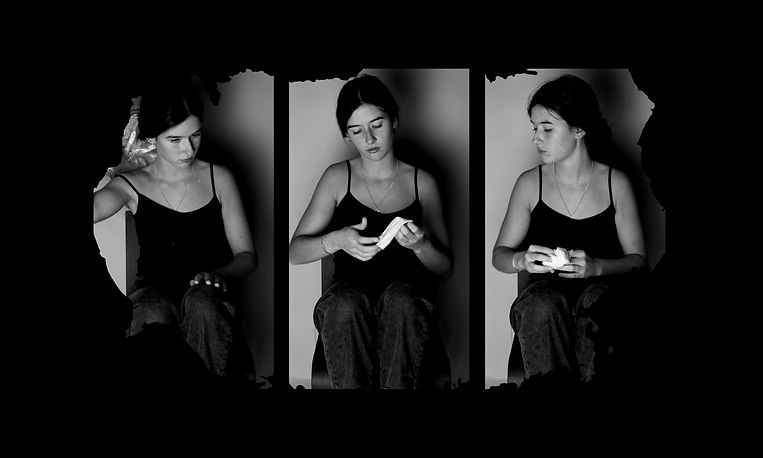"Power or Pressure?"
Paper Manipulation, Skirt made of Vogue Magazines

The fashion industry carries a toxic reputation of idealised femininity and elegance, often pressuring women into becoming someone they are not. Simultaneously, the same industry can make a woman feel powerful, putting her on the front of magazines or billboards, for example. This imposing skirt made of a cardboard structure and fashion magazine paper, brings to life the paradoxical concept of power or pressure. Stepping into this skirt can make you feel elegant, grand, and powerful on the one hand—representing the so-called “perfect” depiction of femininity. While on the other hand, the rugged inside of the skirt, adorned with staples and aggressive calligraphy, show the pressure put on women in the industry—a pressure not easily perceived by the public.

Interaction with the piece



Details



"BEHIND"
Immersive Installation & Video Work


“Behind” is a critical reinterpretation of a photograph taken by Helmut Newton. Rather than replicating the original image, I wanted to challenge it, to break it down and rebuild it through a more intimate and authentic lens. Newton’s work, known for its eroticism and bold depictions of women, often positions the female body as a symbol of power. But in this specific image, I didn’t see power, I saw an object. I wanted to respond to that. I created a video piece that visually deconstructs the image, gradually stripping away layers to reveal a raw, unfiltered presence. No makeup, no styled dress, just a woman in jeans and a sweater. My goal was to provoke the thought that simplicity, honesty, and vulnerability can hold more strength than stylised beauty ever could. The final work was displayed as a three channel video installation. The sequence moves from right to left, visually guiding the viewer backward, a return to the natural, the real. Intimate audio recordings layered over the visuals shared personal stories from women describing moments when they felt objectified or unseen. These voices added emotional weight and context to the piece, grounding it in lived experience. To amplify the voyeuristic aspect, I installed a large fabric curtain with small cut-out holes in front of the projection. Visitors could only peek through, never fully seeing the piece unless they leaned in. This physical barrier was intentional. It mirrored the feeling of watching something private, of stepping into an intimate space not entirely meant for you. “Behind” is both a critique and a reclaiming. It’s an invitation to question beauty, power, and visibility looking closer at what lies beneath the surface.

%2021_33.jpg)

